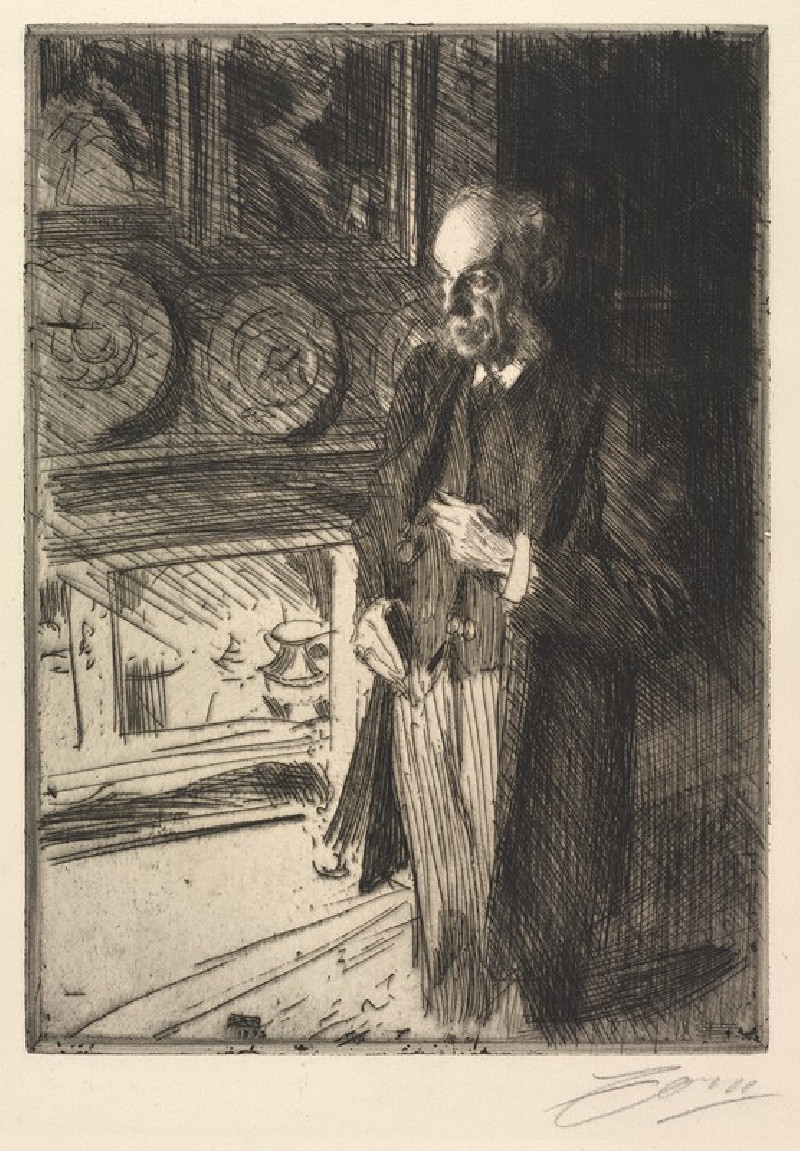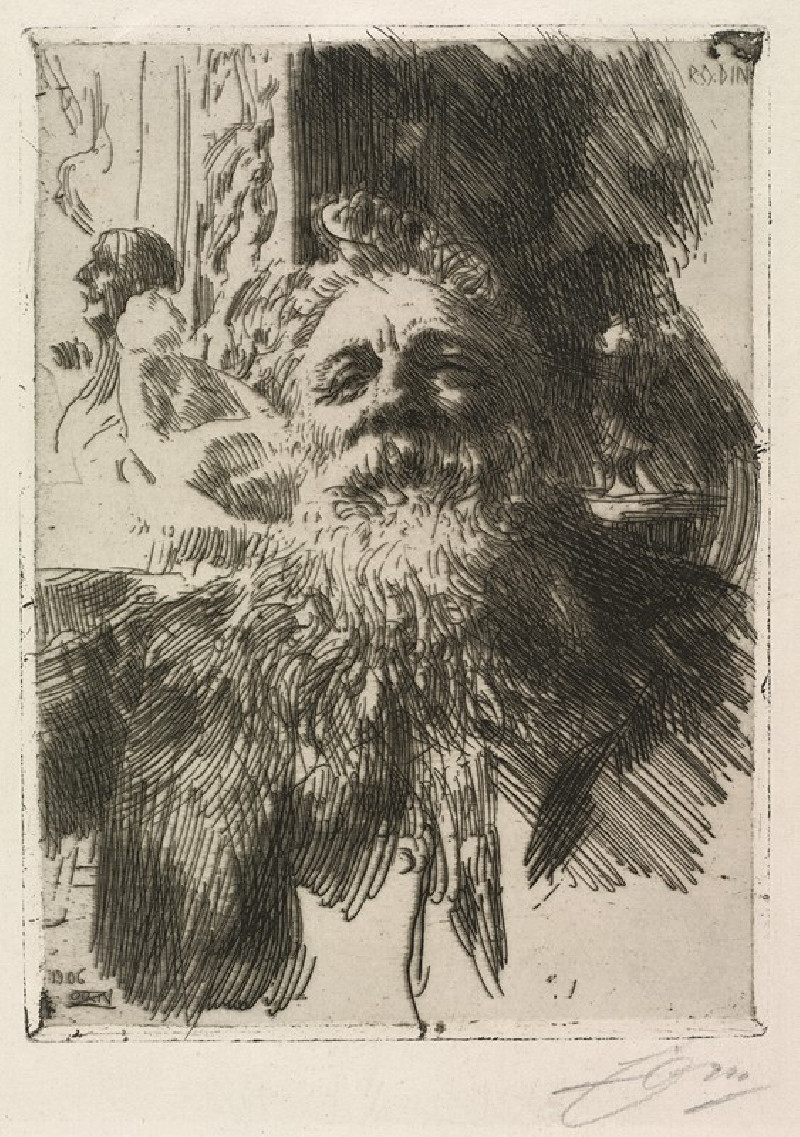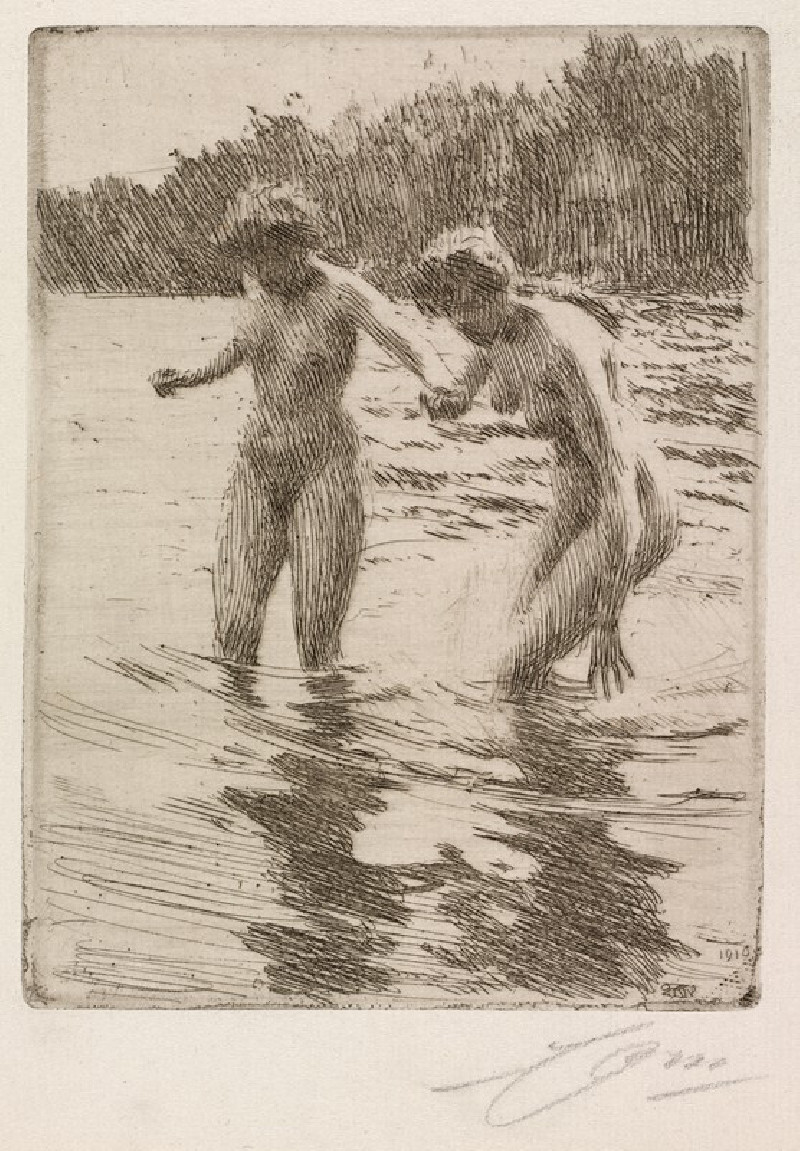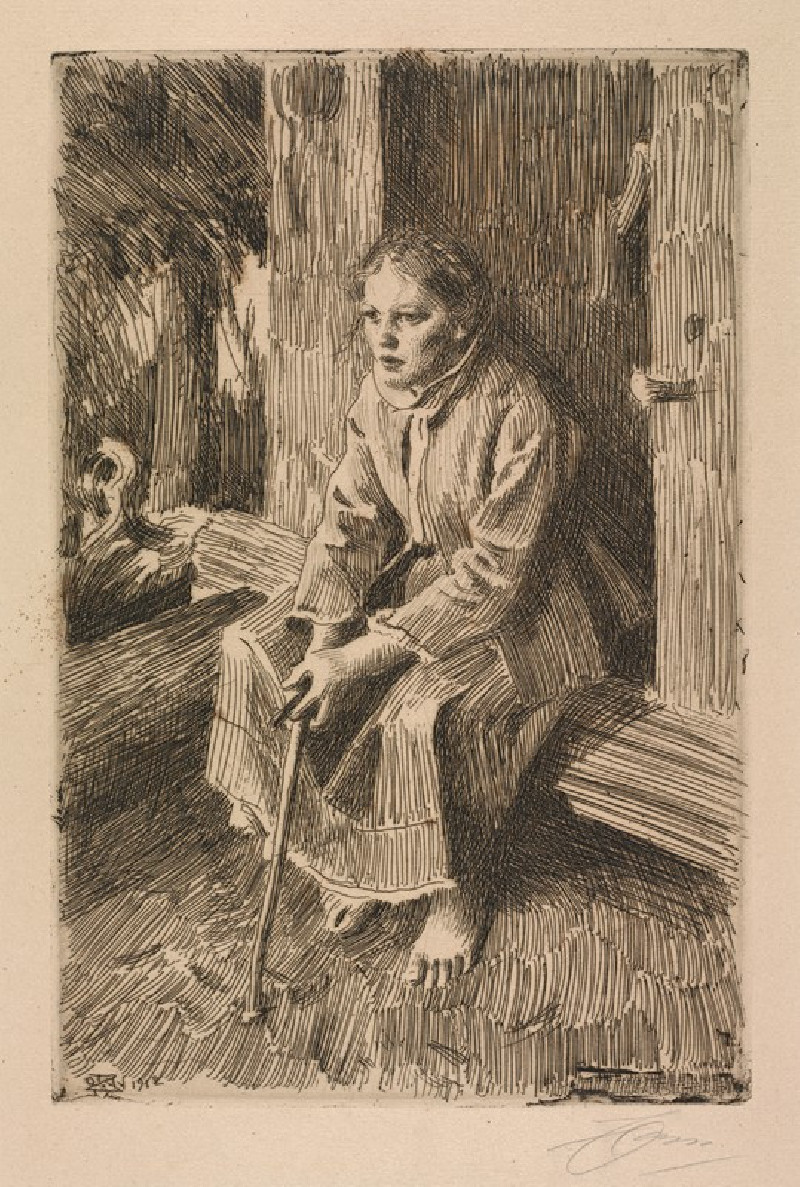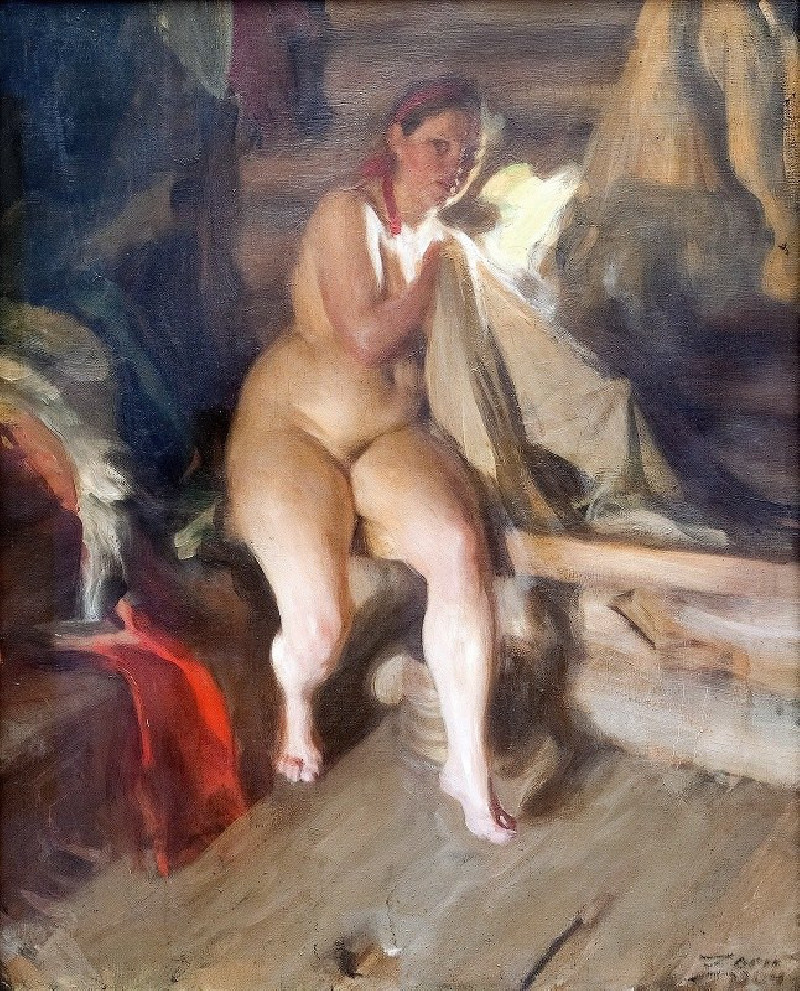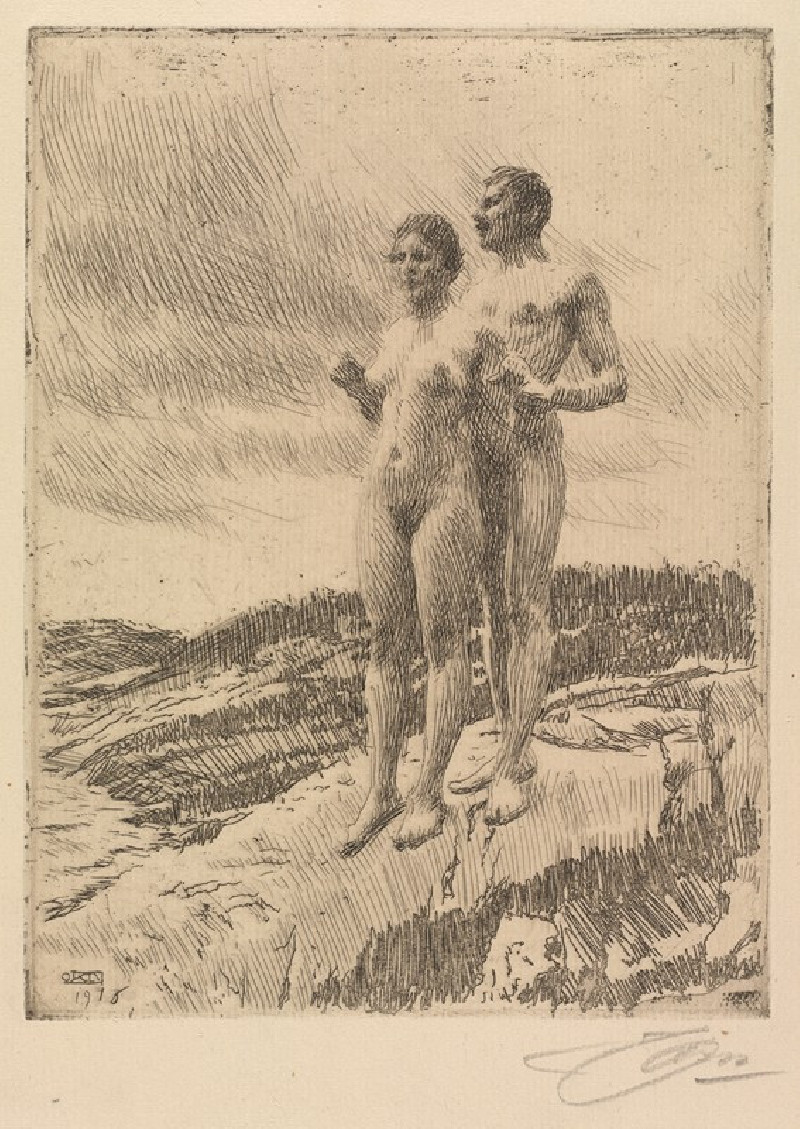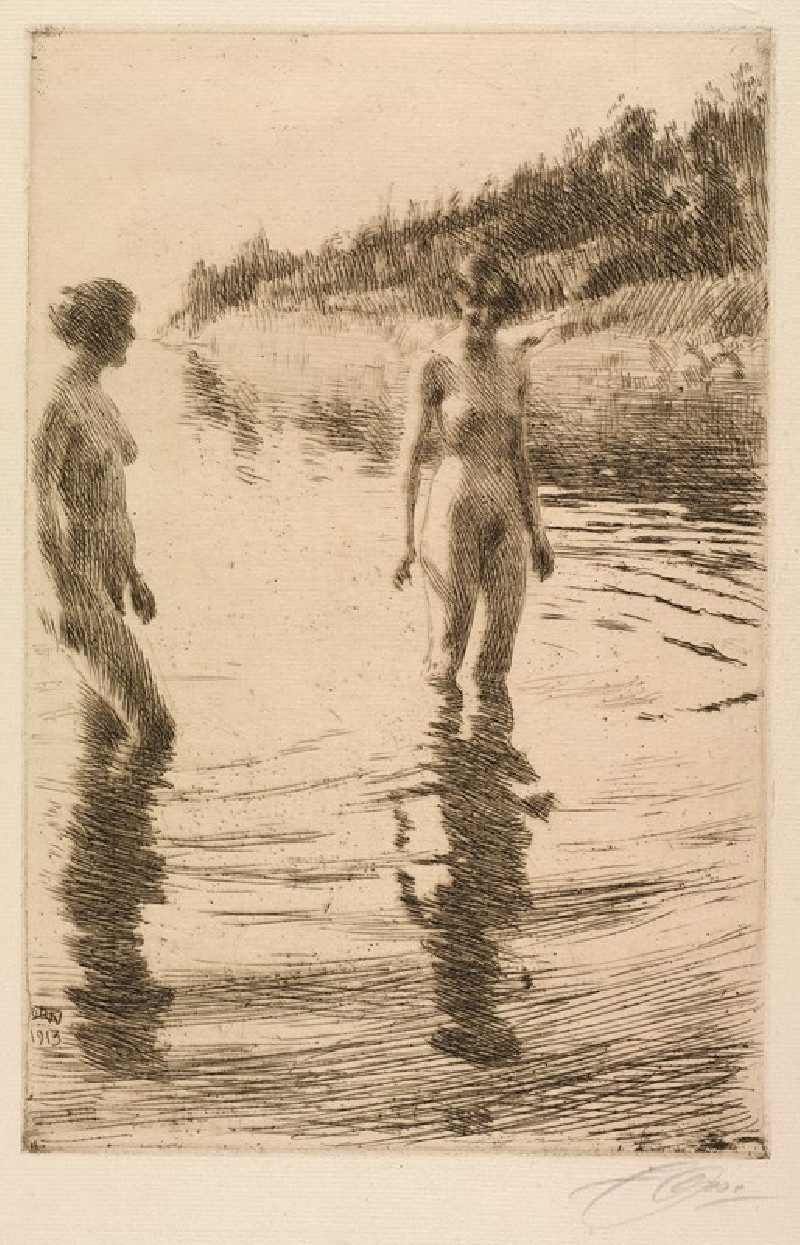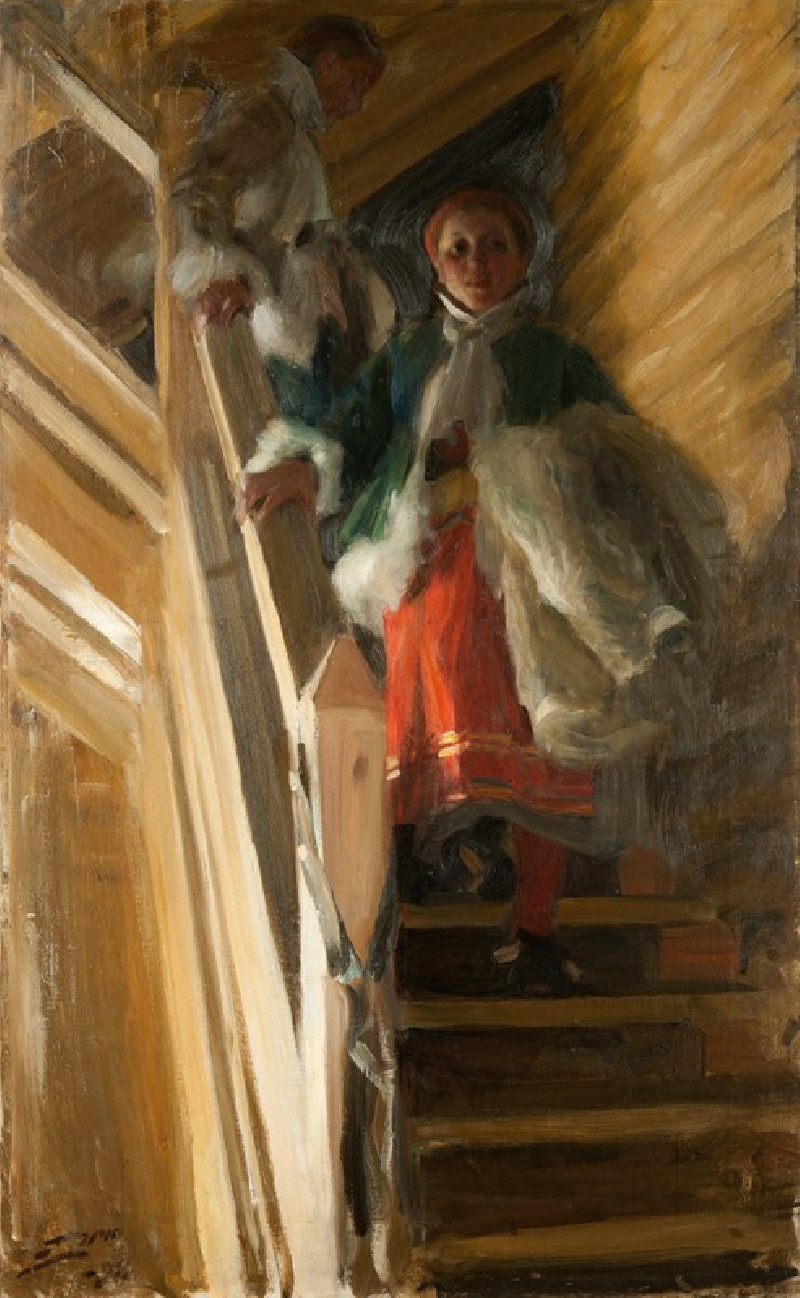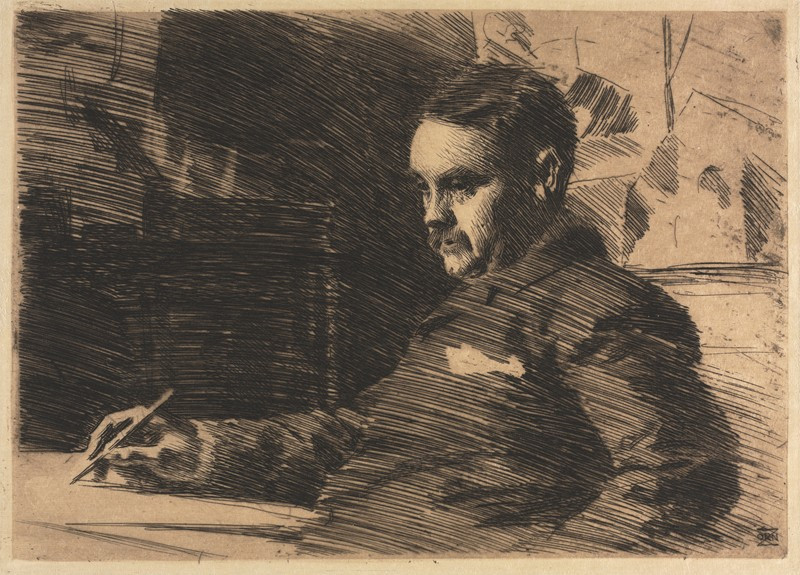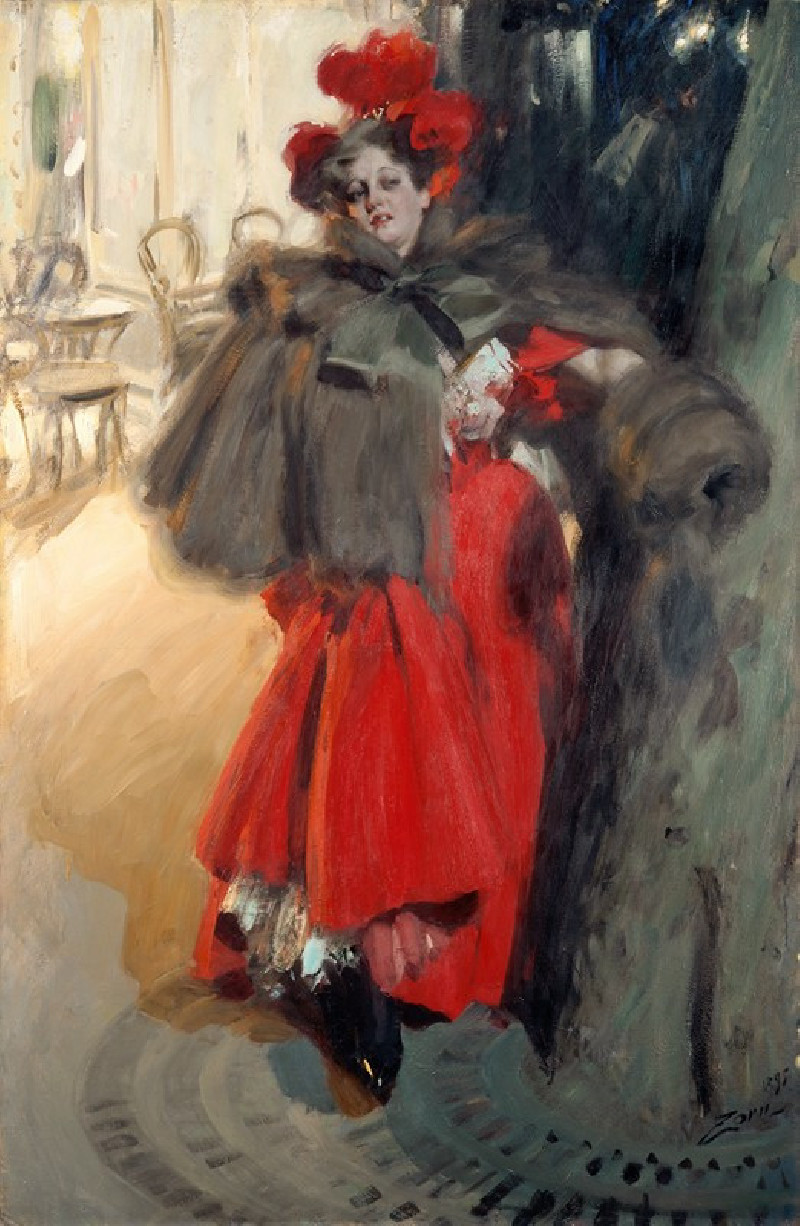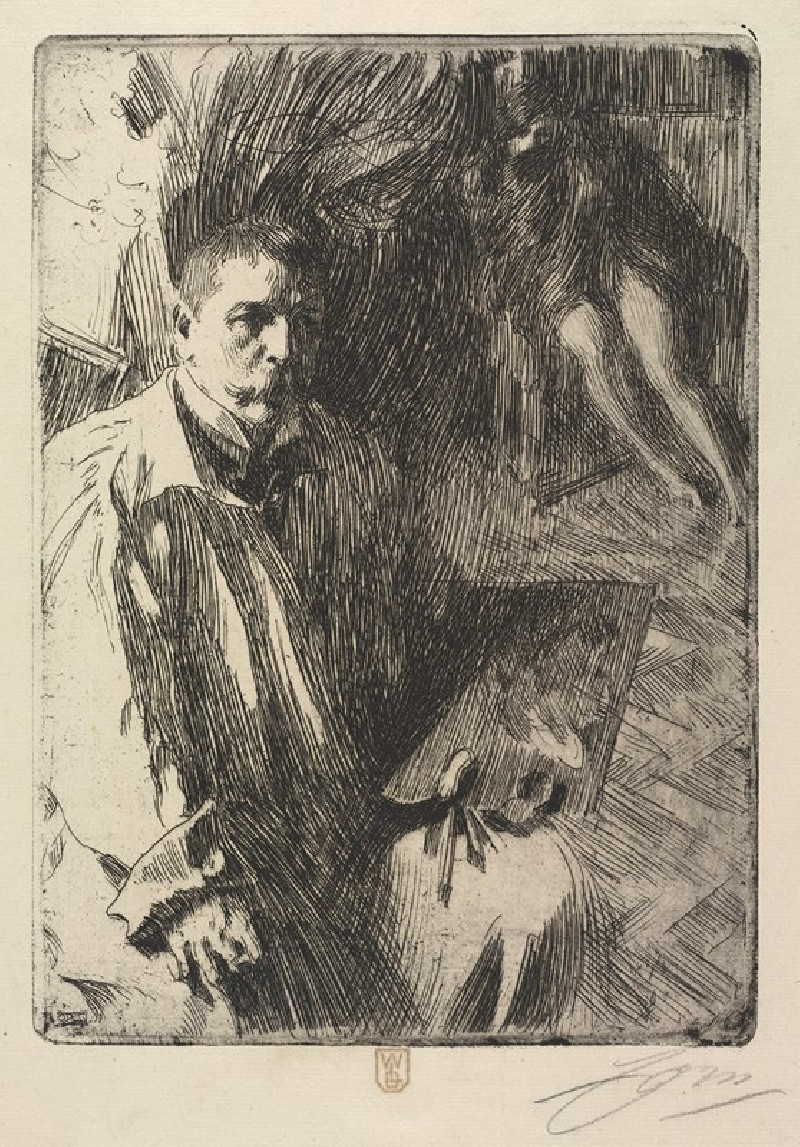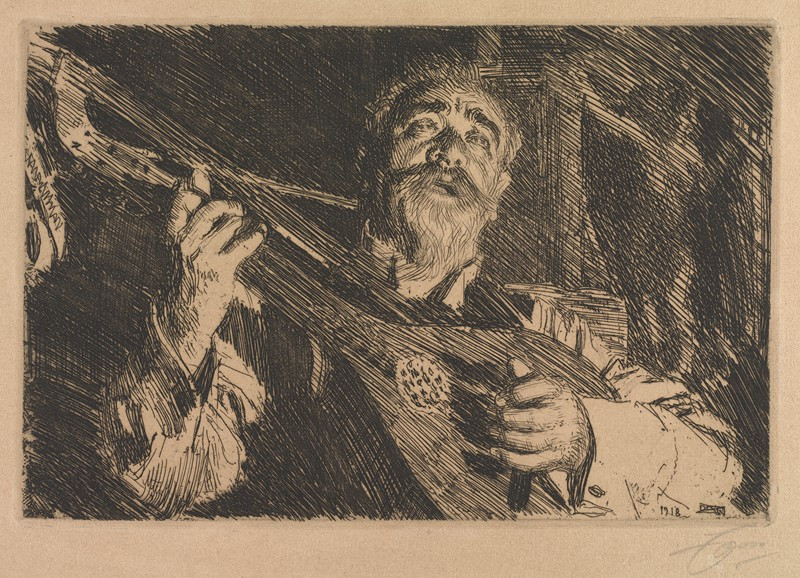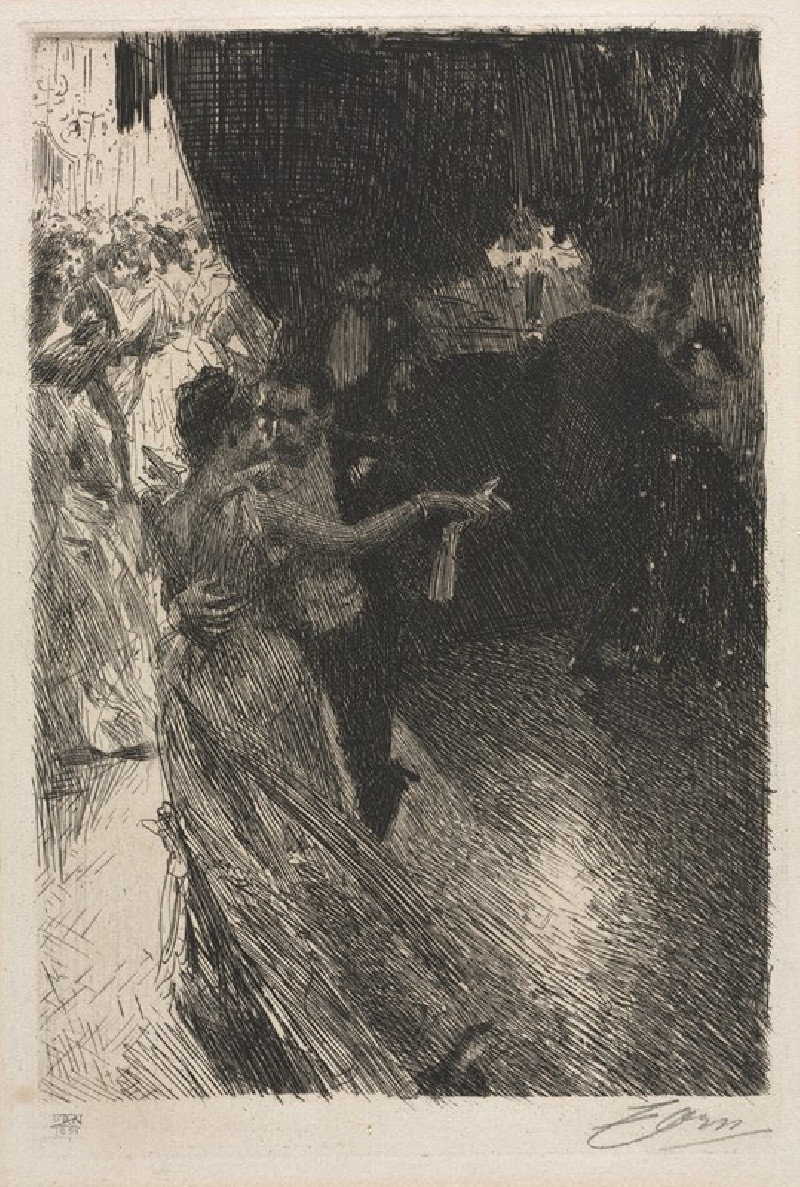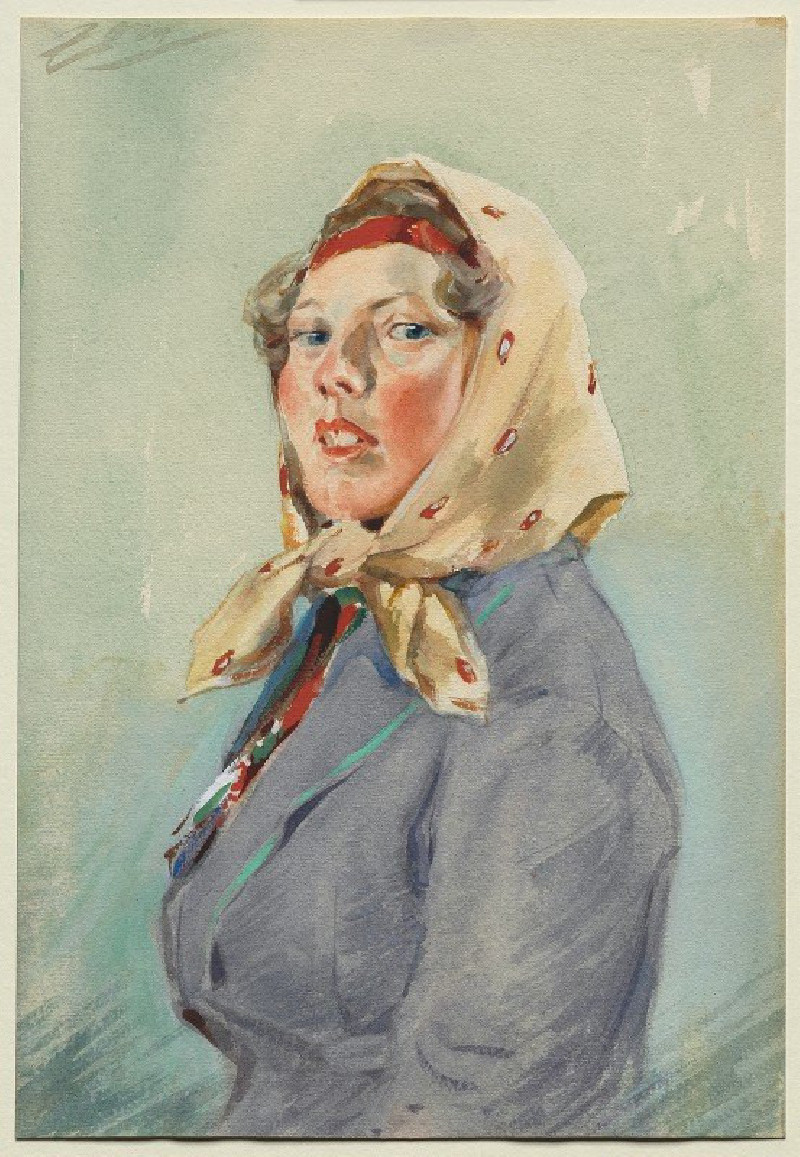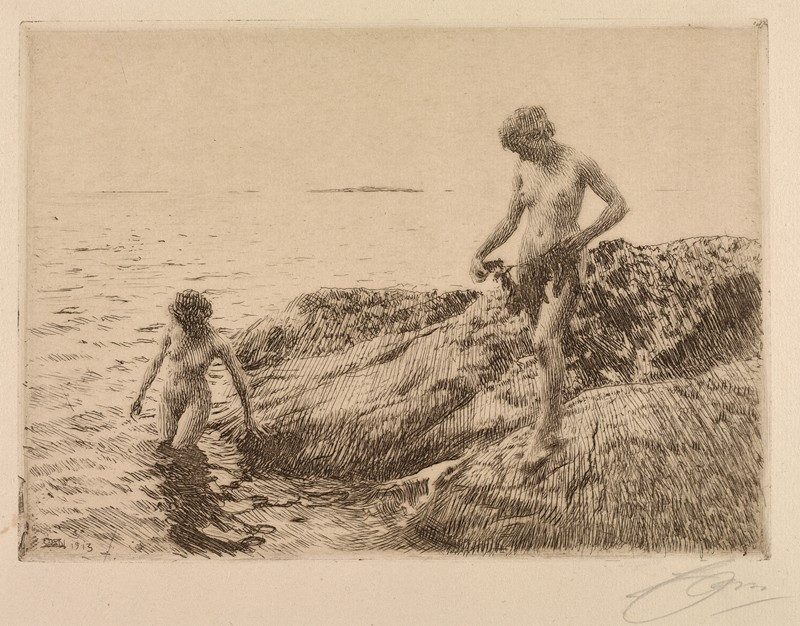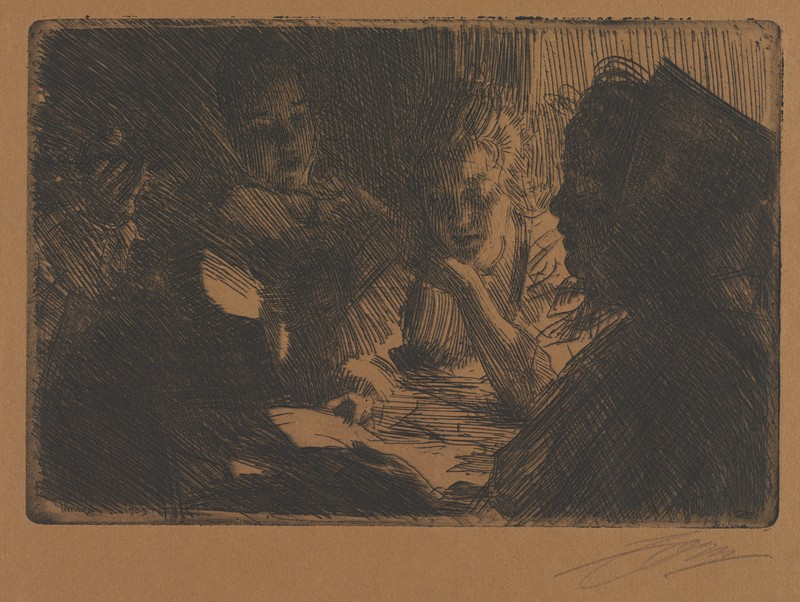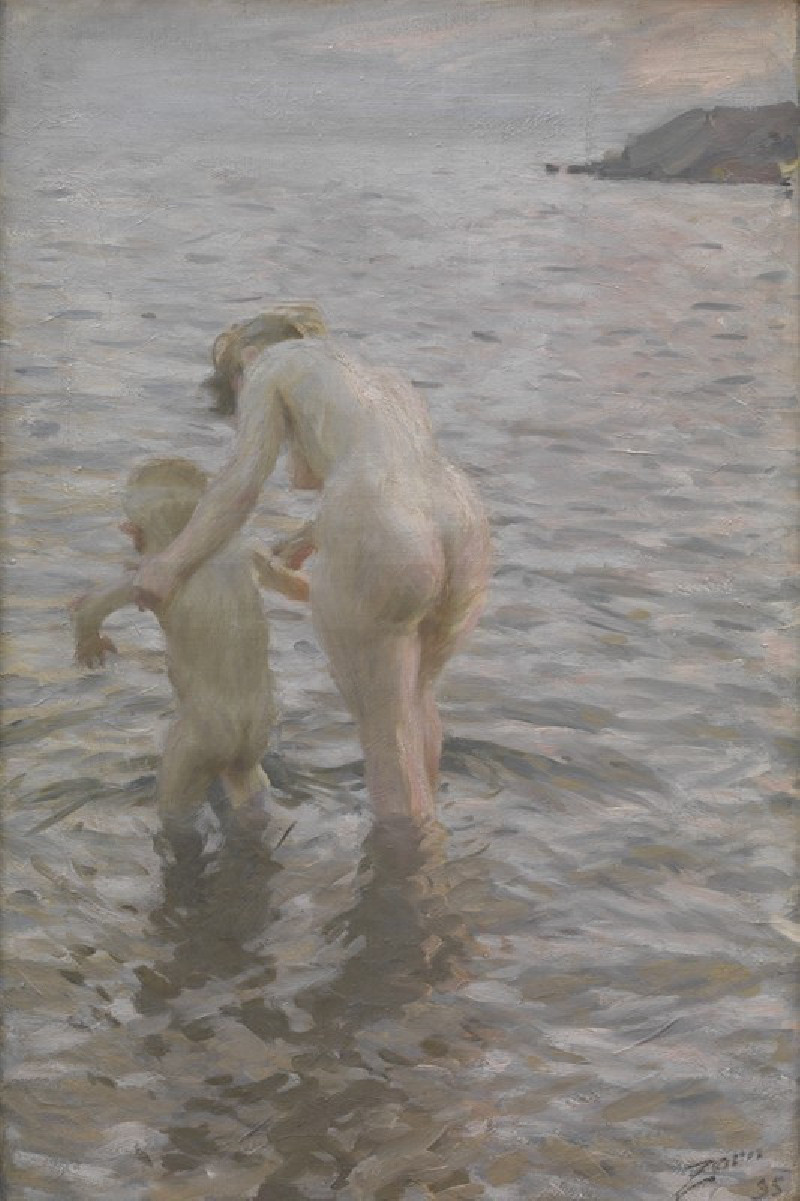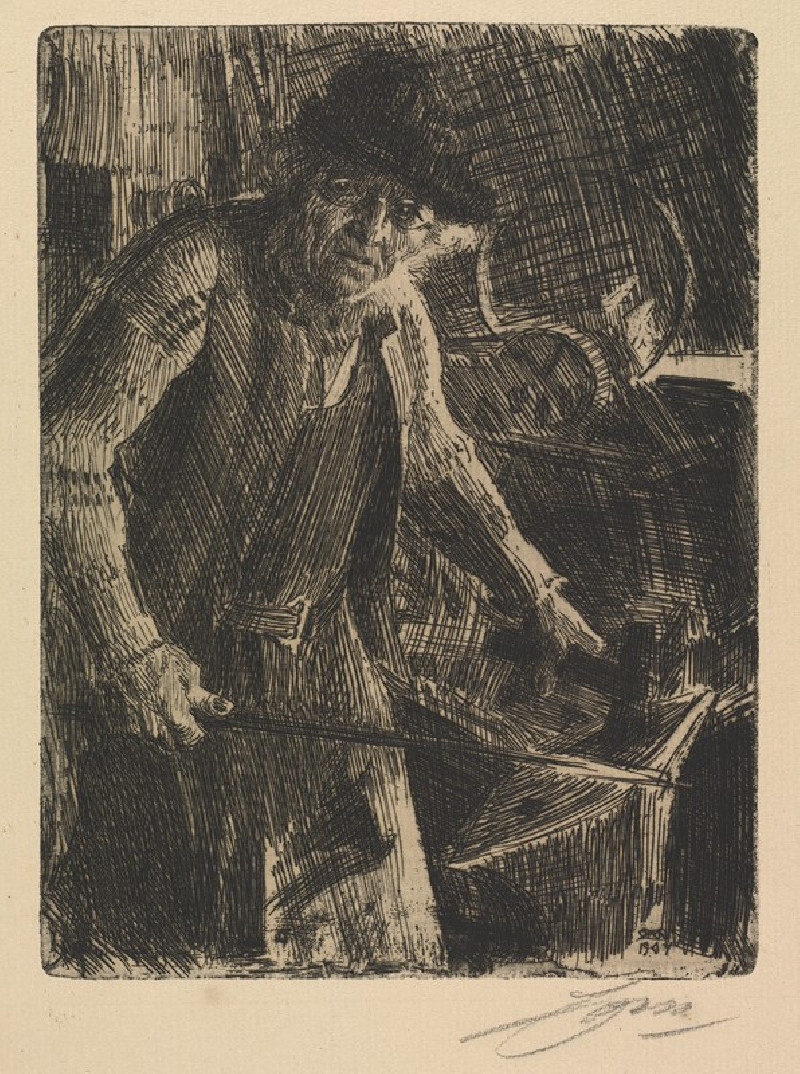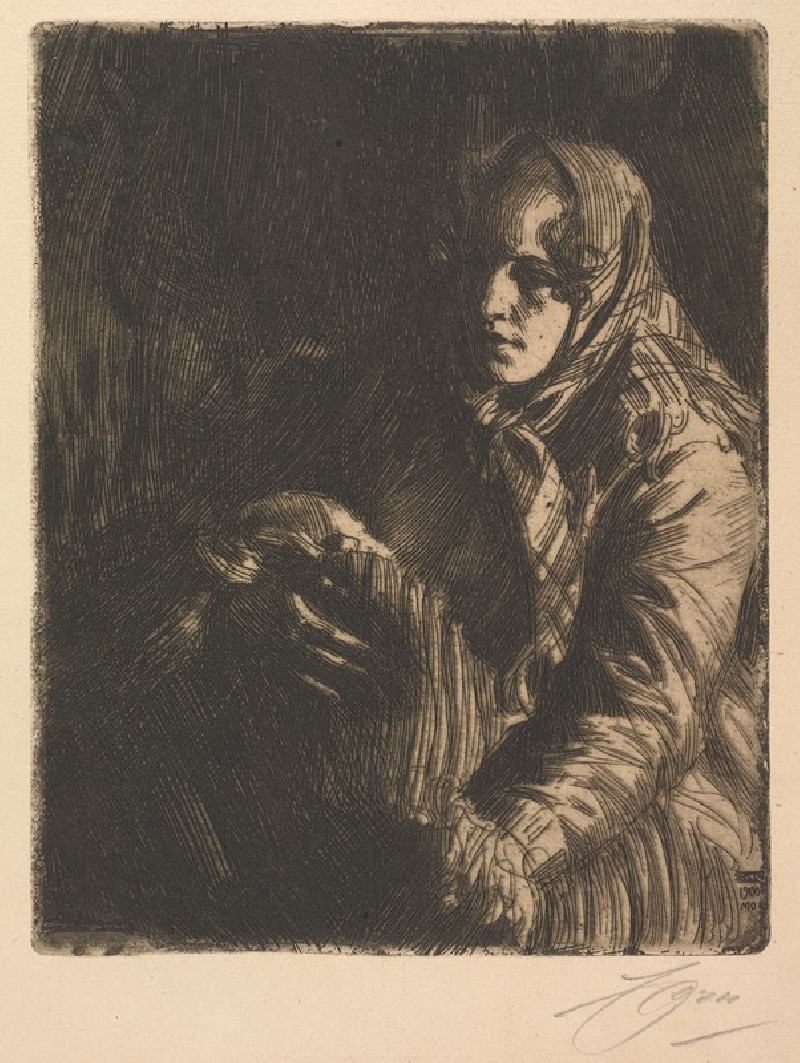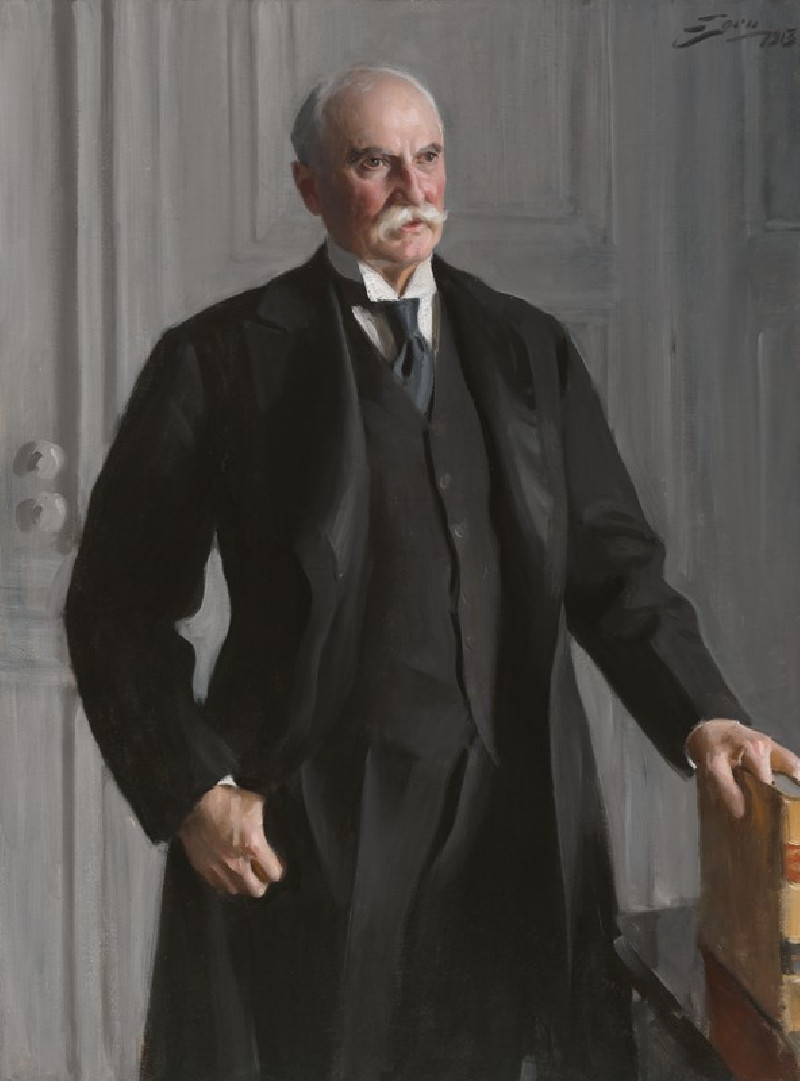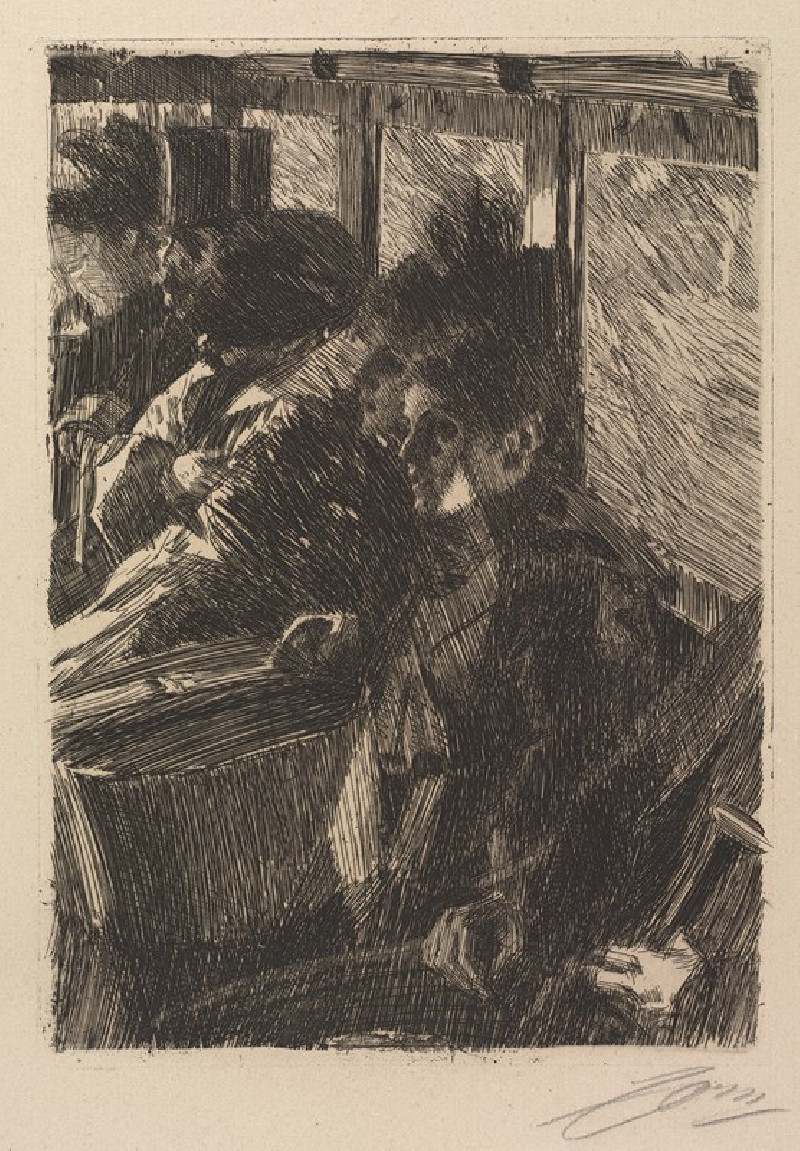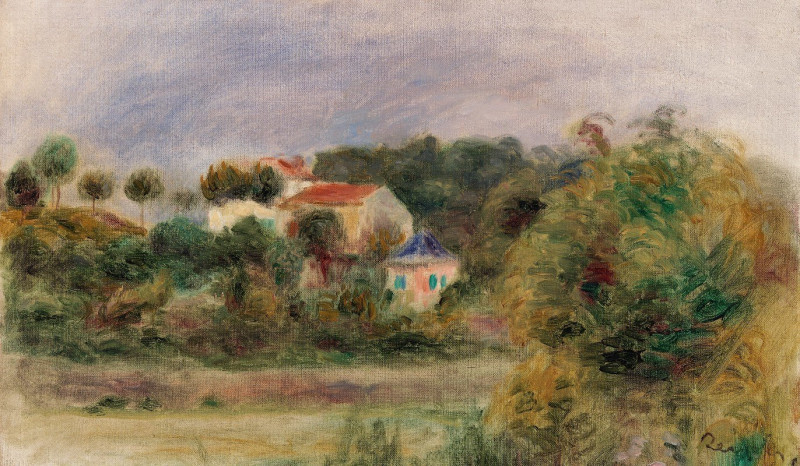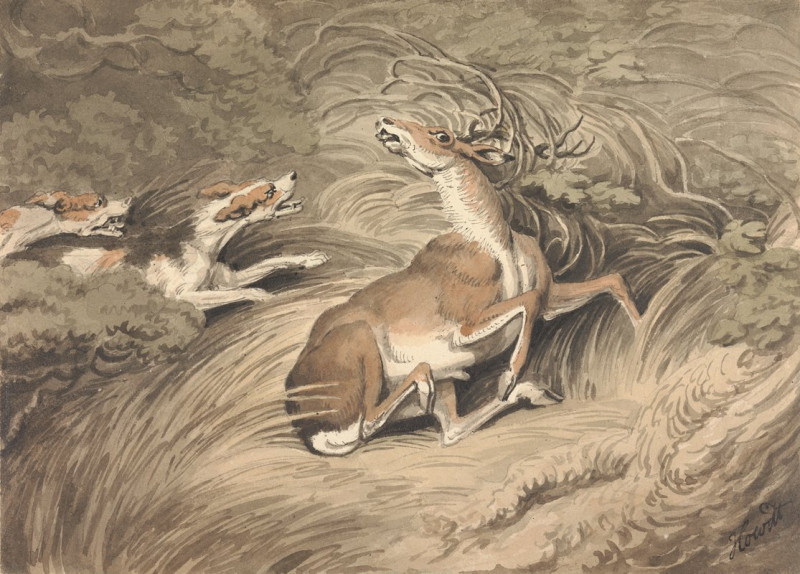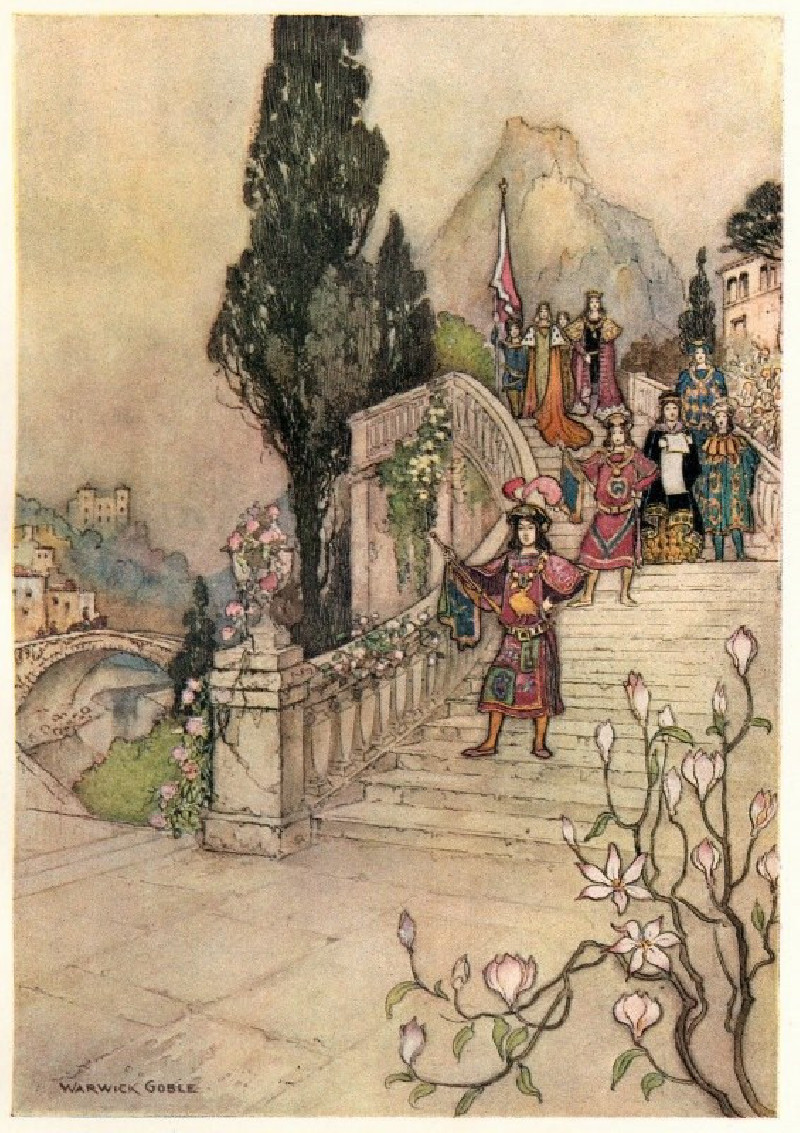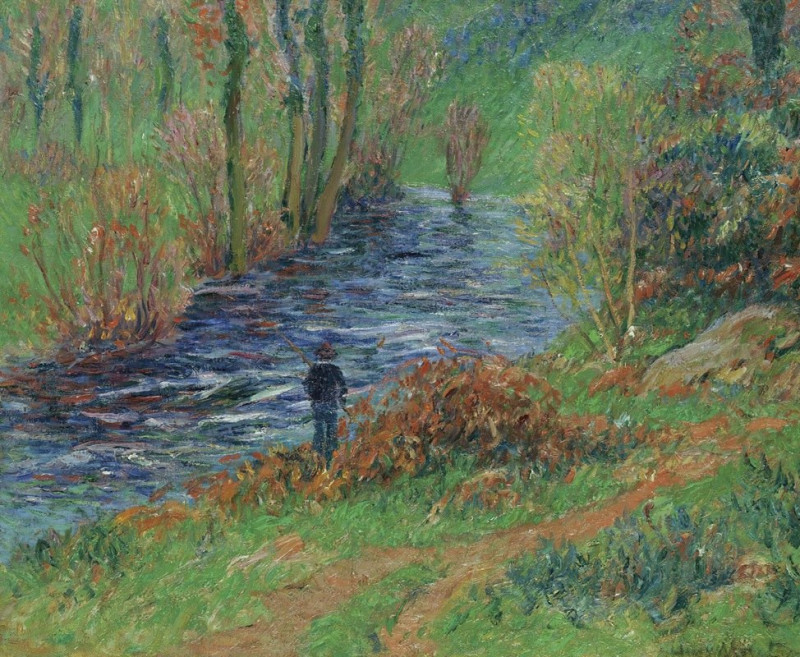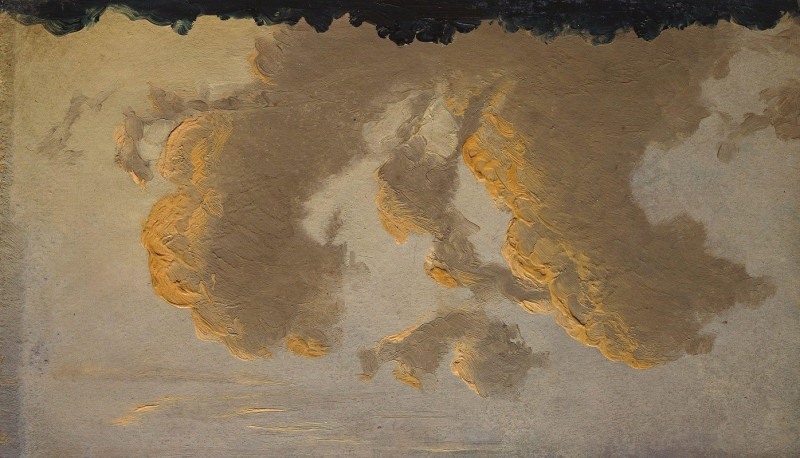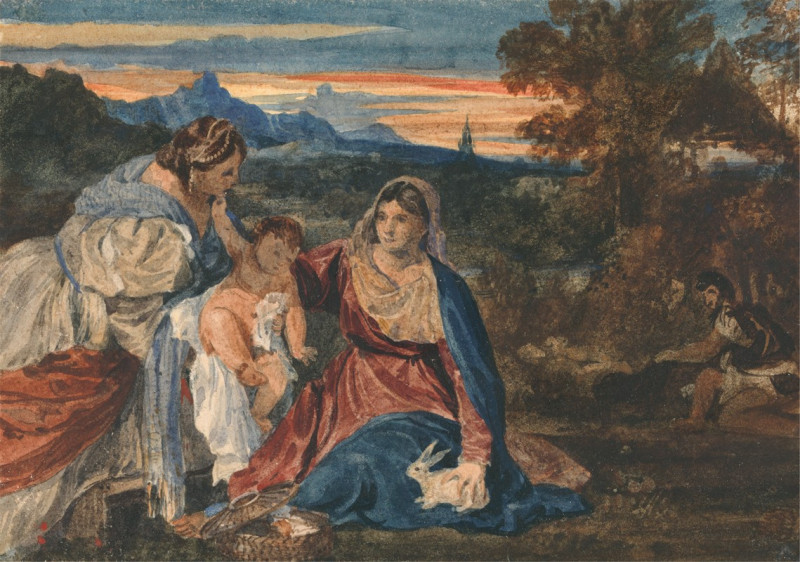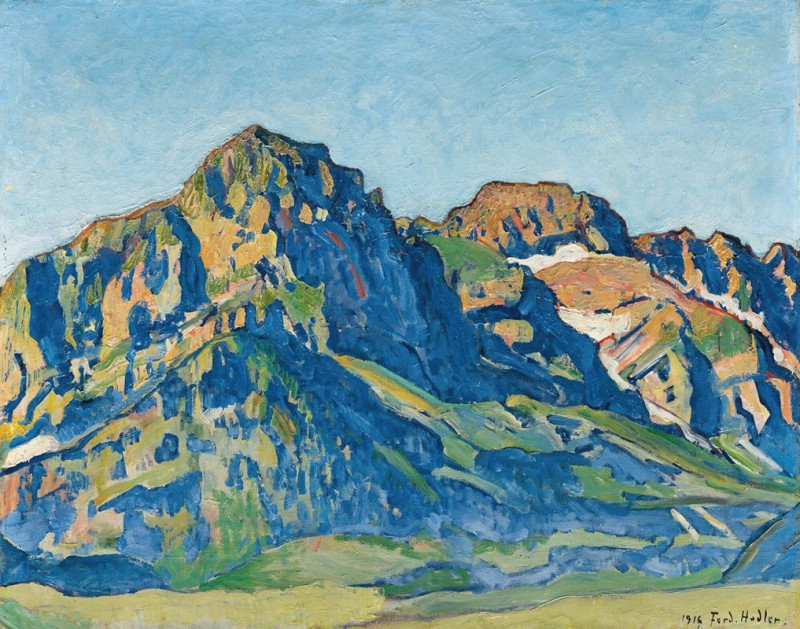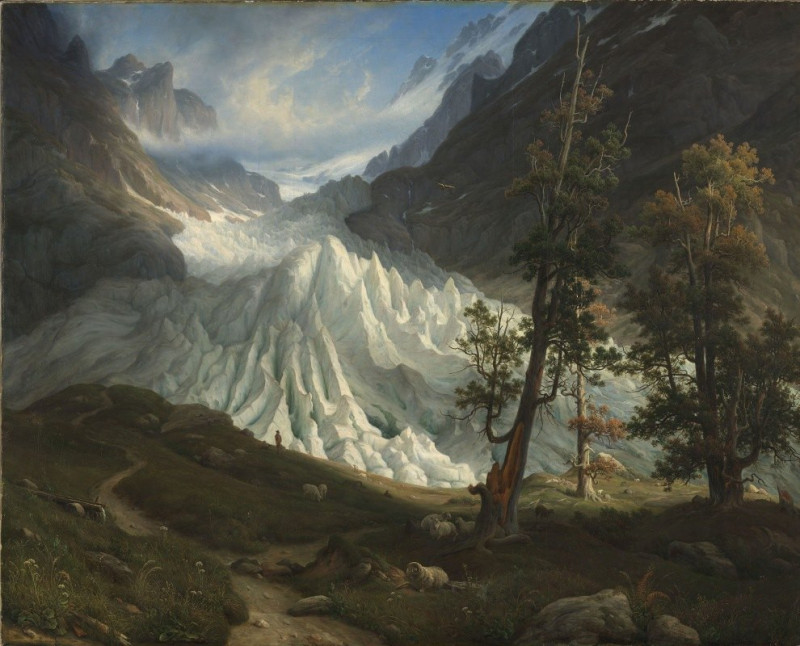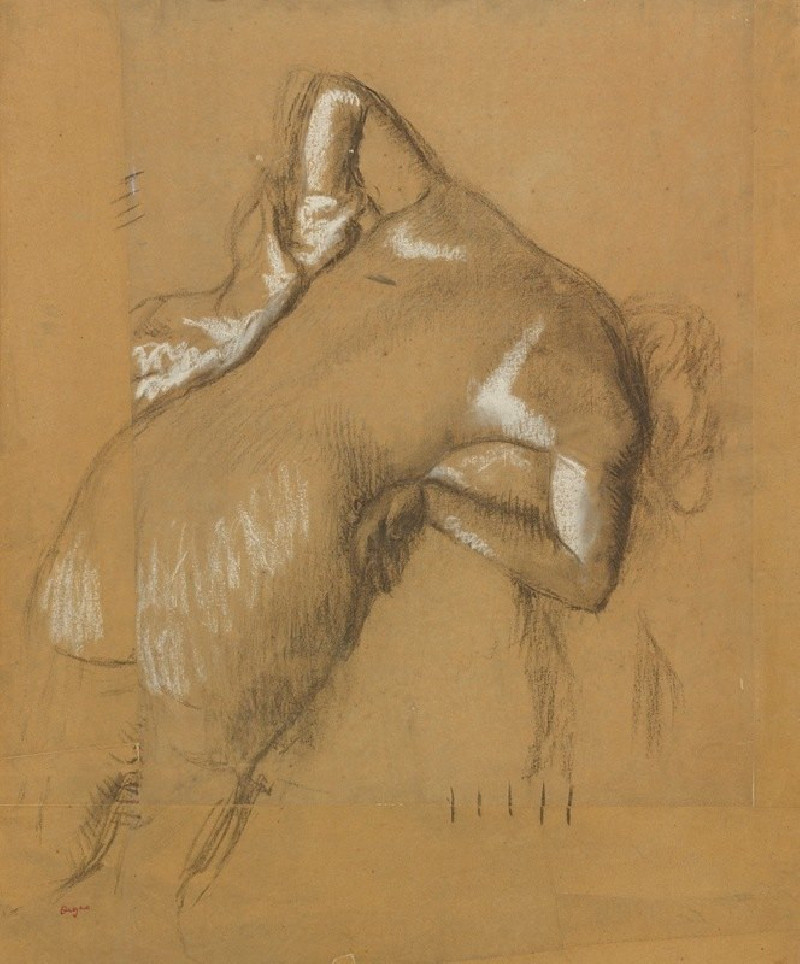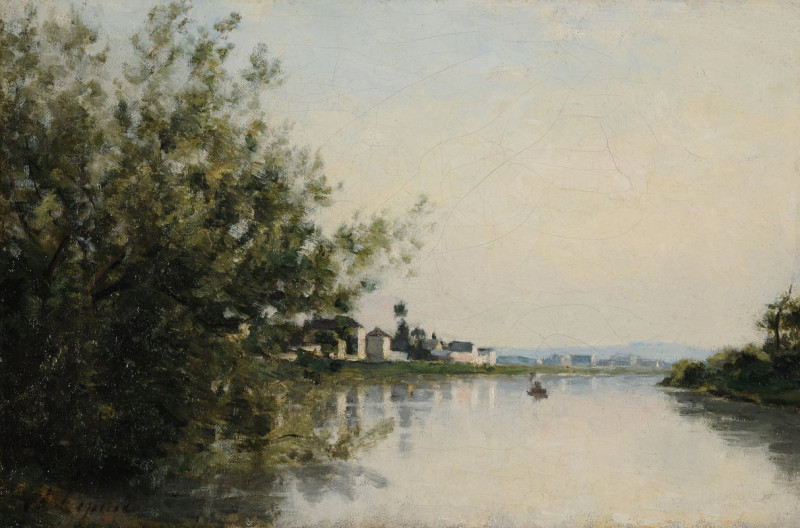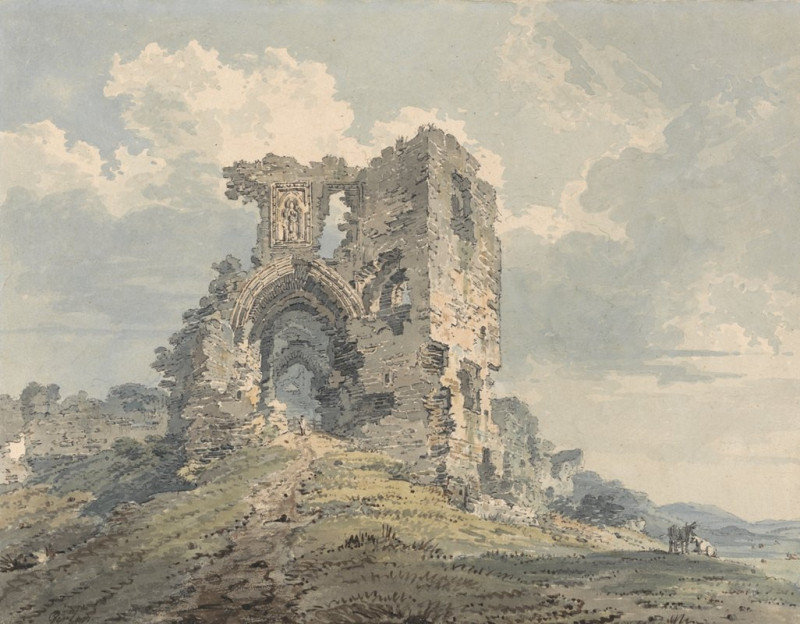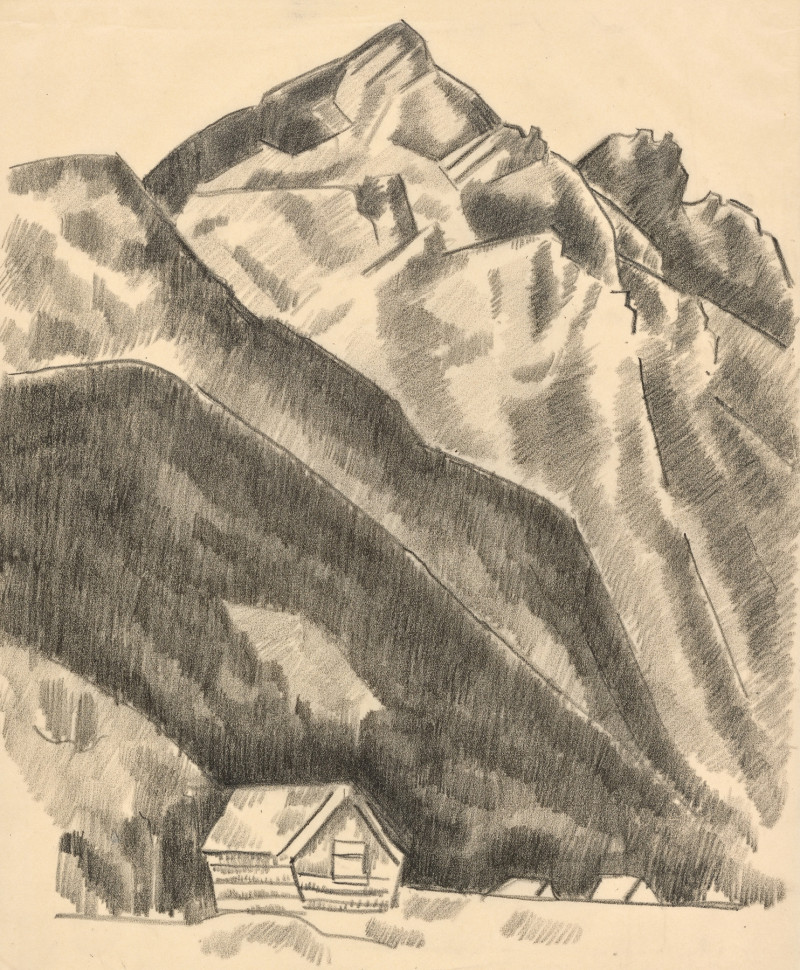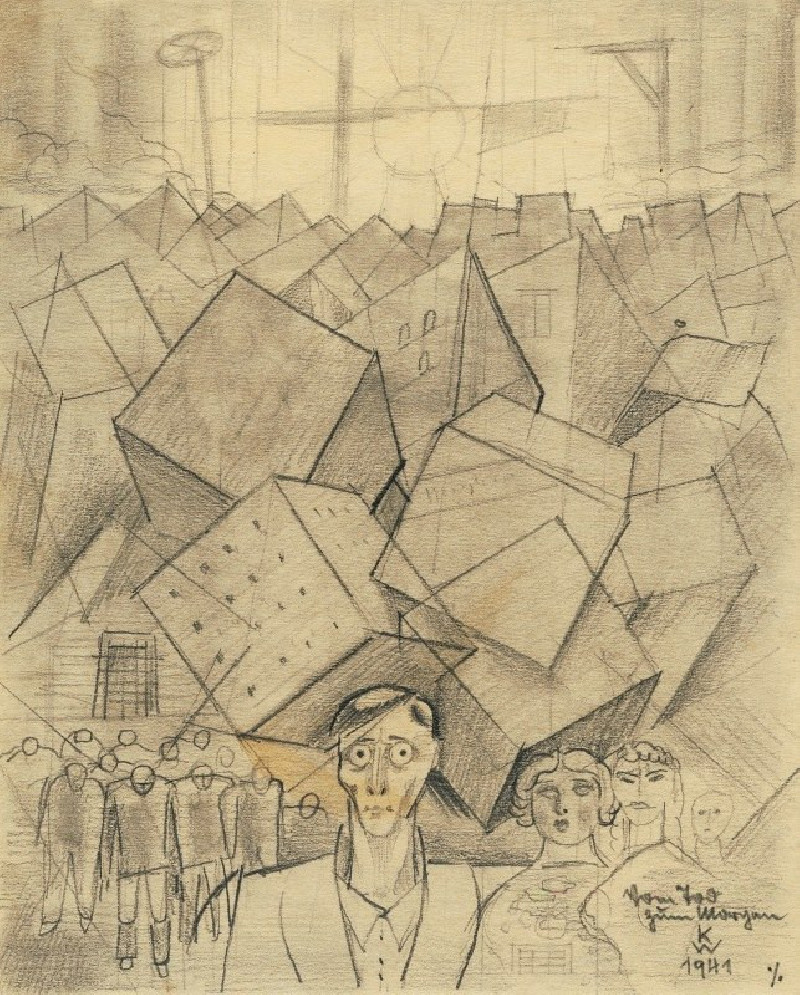Herny Marquand (1893)
Technique: Giclée quality print
Recommended by our customers
More about this artwork
We invite you to explore the intricacies of Anders Zorn's remarkable etching "Henry Marquand" from 1893, showcased in our latest exhibit. This compelling work portrays Henry Gurdon Marquand, a prominent American financier and one of the founding benefactors of the Metropolitan Museum of Art.In this etching, Zorn captures Marquand in a moment of reflection, surrounded by rich textures that enhance the depth of the scene. The detailed strokes depict Marquand standing by a fireplace, his face casting an expression that suggests deep thought or concern. His right hand lightly touches his chin in a contemplative gesture, while his left grasps a paper, possibly a letter or a document of significance.The background is a masterful display of Zorn’s skill with the etching needle, featuring elaborate wood carvings on the mantelpiece and a glimpse of a framed picture, adding layers of narrative and aesthetic appeal. The contrast of the darks and lights intensifies the emotional atmosphere, inviting viewers to ponder the thoughts occupying Marquand at this captured moment.Zorn, renowned for his ability to capture the essence of his subjects, uses a dramatic interplay of light and shadow, making "Henry Marquand" a not only a portrait but a story rendered in ink. This piece is a prime example of Zorn’s prowess in etching, a technique that requires precision and creativity in equal measure.As part of our exhibit, this piece offers a unique window into the turn of the century, reflecting both the personal and societal nuances of the time.
Delivery
Returns
Anders Leonard Zorn (18 February 1860 – 22 August 1920) was a Swedish painter. He attained international success as a painter, sculptor, and etching artist. Among Zorn's portrait subjects include King Oscar II of Sweden and three American Presidents: Grover Cleveland, William H. Taft, and Theodore Roosevelt. At the end of his life, he established the Swedish literary Bellman Prize in 1920.

